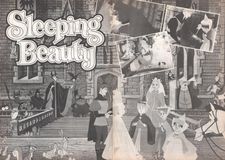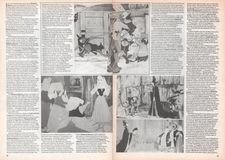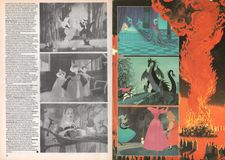


It is now twenty-two years since Sleeping Beauty was first released. Since then it has been sadly neglected by students of the animated film as well as audiences and critics alike. In 1970 it had its first re-issue in Britain and has not been seen here since. Now at last cinema-goers will have a chance to see what is perhaps Walt Disney's most ambitious cartoon feature to date.
Costing a total of £3,000,000 and spanning a seven-year production schedule, Disney had high hopes for this, the last and greatest of his animated fairy tales. Presented in the lavish Technirama 70mm process, and supported by full stereophonic sound. Sleeping Beauty was to have heralded a new age in the art of animation. But instead, marked the end of an era at the Disney studios.
Walt Disney Productions had shown a record profit for the fiscal year 1958-9. Now it was to suffer a loss of over £1,500,000 due largely to the failure at the box office of Sleeping Beauty. The total gross for the film when released only amounted to £2,750,000. Disney claimed that he knew they had overspent in bringing Sleeping Beauty to the screen. Like Fantasia had been in the early forties, it was an experiment that had failed.
"I sorta got trapped," he later told biographer Bob Thomas. "I had passed the point of no return and I had to go forward with it."
Critics at the time were quick to point out how the film lacked the humour and personal touches of previous Disney features. The main reason for this was probably Disney's giving less attention than usual to the project. By the Fifties, Disney was becoming more involved with live-action films. This meant that he spent more time away from the studios, especially with regard to his Disneyland project. Television was also making a big impact in Hollywood and unlike other film companies who kicked against the competition, Disney saw an opportunity to use this fast growing medium as a way to sponsor Disneyland and promote his films. His television shows became an instant success and subsequently made Disneyland one of the most popular amusement parks in America.
The Sleeping Beauty project had began its life on January 19th 1950 when the title was registered with the Johnston Office, a bureau set up by the Producers Association that gave legal protection to film titles. Storymen Ted Sears, Winston Hibler, Bill Peet and Ralph Wright began work on the plot, making a study of the two best-known versions available, "Little Briar Rose" by the Brothers Grimm and "La Belle au Bois Dormant" by Charles Perrault.
[…]